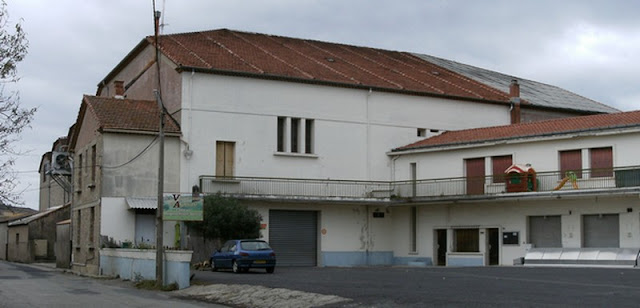Like many in the region, the Cave Cooperetive at Aspiran on the west side of the central Hérault valley has been in decline. Wine hasn't been bottled for pushing a decade, no doubt because a massive investment in equipment is required to make wine to modern standards. It hasn't always been like that. 1957 saw the first, at least for a Languedoc cooperative, Vaslin horizontal presses installed (replaced in 1975). As recently as 1988 was another first when a Bucher pneumatic press was acquired.
There are similar stories in the area. The cooperative at Caux closed several years ago and is already a decayed building - the grapes go down the road to Les Caves Molière at Pézenas. Nizas has a similar tale.
The trend has been for cooperatives to combine to create even greater economies of scale, but there are notable local exceptions. Fontès and Cabrières seem to do well and are certainly good at marketing. Fontès boasts the best rosé in the area and a new customer reception salon has been constructed this year. Cabrières uses their reception space to host art exhibitions and has managed to maintain a reputation for its wine. To the south at Florensac a light and airy tasting and sales space has been created with an excellent and popular attached restaurant Bistro d'Alex serving their wine at near retail price. Adissan has more land suited to growing Clairette and their bottles line the shelves of the regions and no doubt beyond supermarkets. Much will also be supplied to make Noilly Prat in Marseillan (blog article here). Further afield I have commented on the quality of the Roquebrun Cooperative in the Saint-Chinian appellation.
Things are looking more promising for the grape growers of Aspiran to obtain a higher price. Between 1963 and 2003 eight villages combined to produce wine under the Clochers et Terroirs branding. An enormous modern facility at Puilacher now makes all the wine and the Aspiran cooperative has joined in. The relatively dull cooperative building (photo above) survives for now as the harvested grapes are collected and de-stemmed there before being tankered off to Puilacher. I tasted some of the wine at a recent village event and the Chardonnay for example was well made and offered some interest.
Some Languedoc discoveries
4 weeks ago


No comments:
Post a Comment